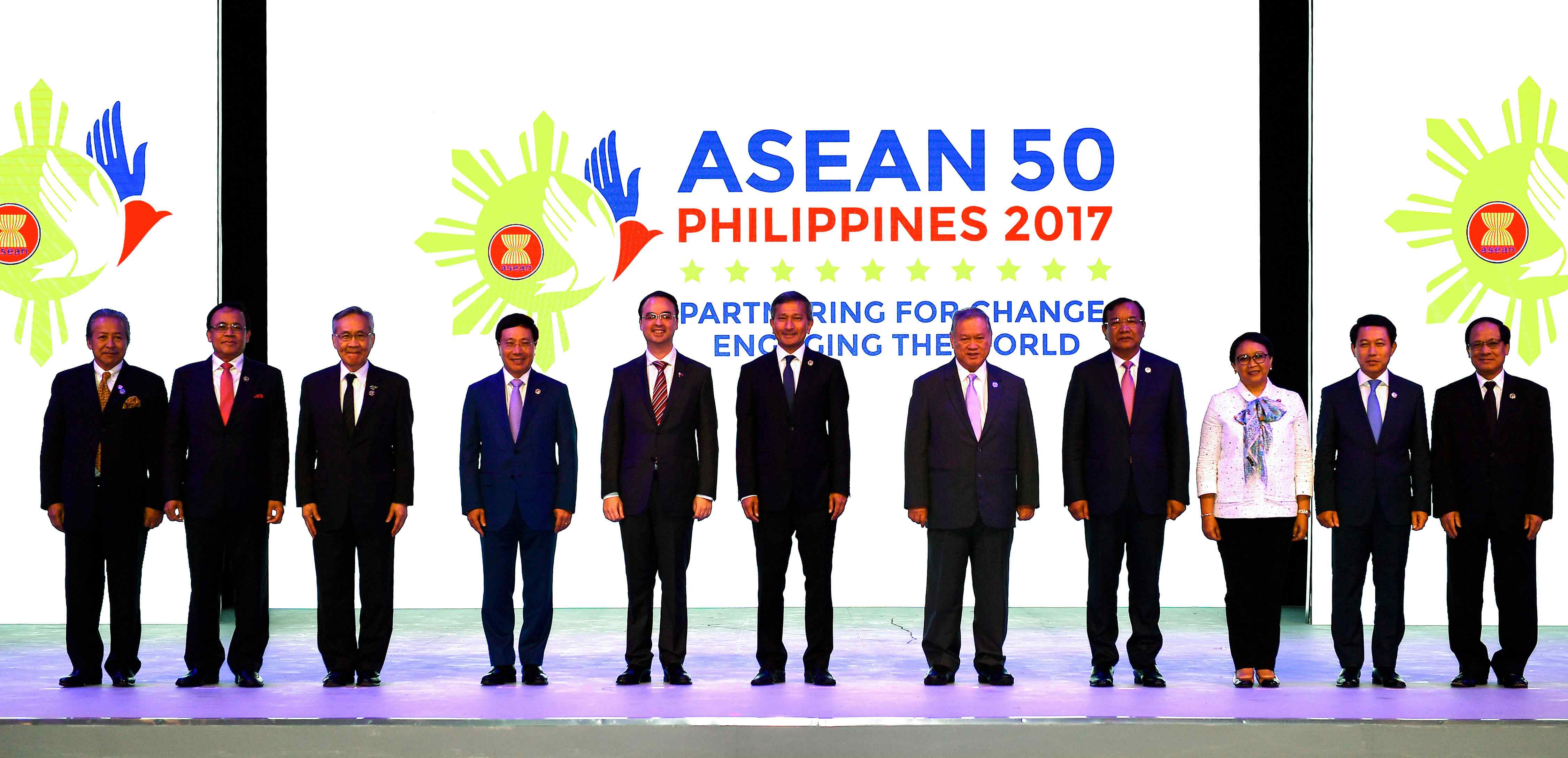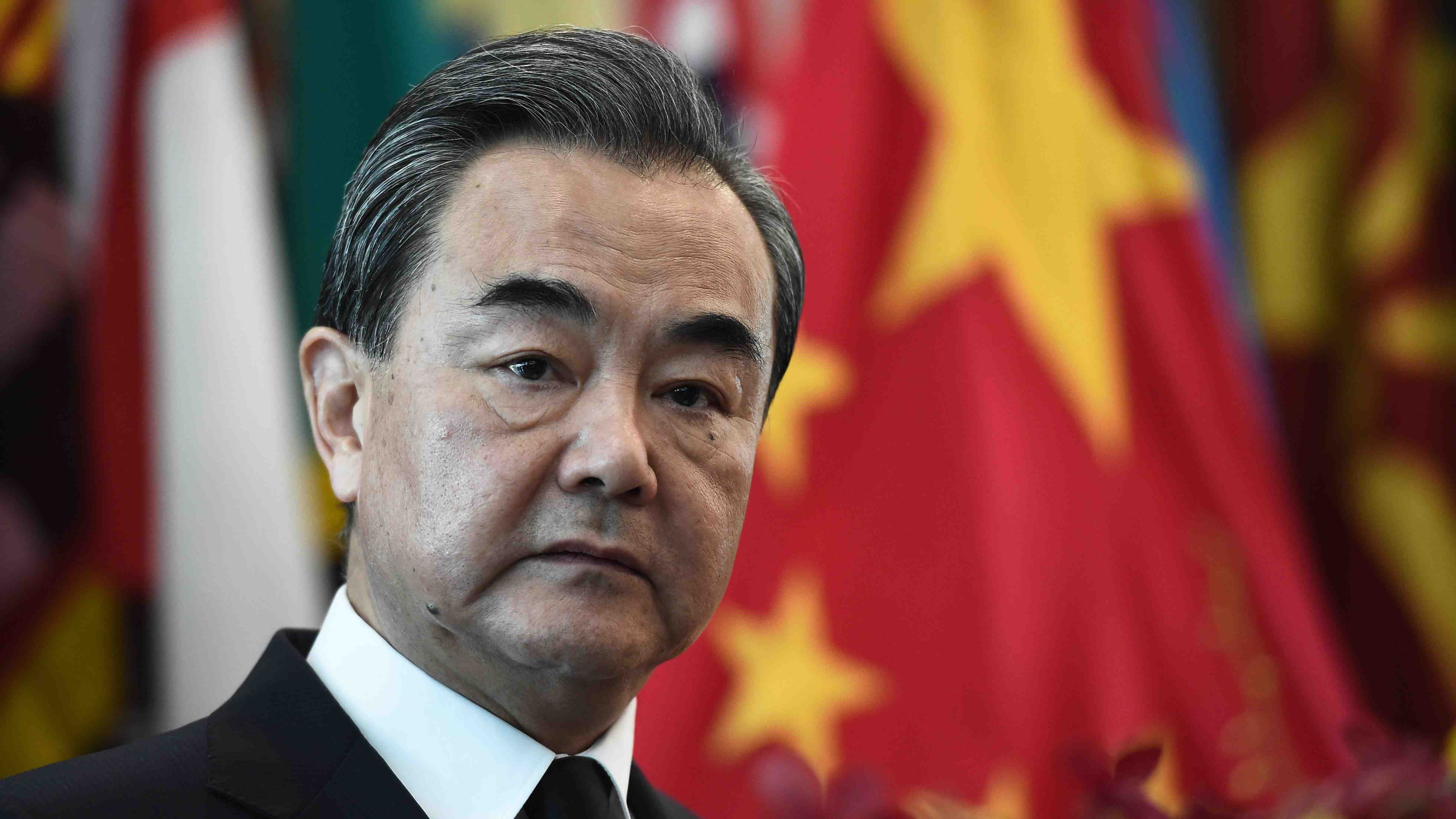The combined population of ASEAN (Association of Southeast Asian Nations) is the third largest in the world, smaller only than China and India.
The bloc is a growing economic force in the world, doubling its combined GDP in just seven years between 2007 and 2014. It is also the world's second largest destination for direct foreign investment.
And now the ASEAN community is seeking to entrench itself as a global power bloc with increased freedom of movement for visitors – just as the US and Europe are tightening visa policies.

Foreign ministers take a family photo during the opening ceremony of the 50th Association of Southeast Asian Nations (ASEAN) Regional Forum (ARF) meeting in Manila on August 5, 2017. /AFP Photo
Proposals to implement a single tourist visa for ASEAN countries are set to be discussed at meetings between foreign ministers on August 6-8 in the Philippines.
The plan – likened to the European Union’s Schengen visa -- is fraught with complications, but could result in the bloc of Asian countries becoming a single entity for tourism visits, opening the door to greater trade and investment in the process.

"We would like to have one visa for ASEAN countries," Philippine Tourism Secretary Wanda Teo said in April. “This is for foreign tourists from all over the world to travel to ASEAN countries. They can stay longer in ASEAN countries.”
Residents of ASEAN members do not have complete freedom of movement within the bloc, or freedom to live or work in other member countries.
But if the plan to allow tourists from outside the bloc single visa access is successfully implemented, could this be a future step?
Benefits of visa plan
The stated goal of the single visa is to achieve an increase in international tourism – from 12.3 percent of GDP in 2014 to 15 percent in 2025 – by addressing inefficiencies caused by multiple border checks.
The ASEAN strategic tourism plan 2016-25 notes that most member states require visas from non-ASEAN countries, making multiple nation visits "expensive and inconvenient, reduces the price competitiveness of the region as a destination, and works against the goal of inclusive economic development."

Tourism in ASEAN members such as Vietnam should be boosted by the single visa plan. /AFP Photo
A single visa would allow tourists and business travelers to move freely within ASEAN countries, potentially boosting tourist numbers significantly and easing trade and investment.
The details of the plan are still under discussion, and it is likely that it will begin with just Thailand and Cambodia sharing a single visa.
Challenges
Implementing the plan across the 10 ASEAN nations will require compromises:
Security concerns are likely to top the agenda in terms of policy differences.
Visa fees provide significant income, and a single visa charge would probably reduce proceeds for individual countries.
Reciprocal agreements for ASEAN citizens applying for visas outside the bloc are not clear.
ASEAN countries offer visa-free access to differing numbers of outside countries: Indonesia grants visa-free travel to 169 countries, while allows visa-free access to 55 nationalities.
Self-interest is also an issue: will established tourist destinations be willing to promote neighbors at the risk of losing their own revenues?
ASEAN will work towards a single visa system despite some policy differences, Thailand's Tourism Minister Kobkarn Wattanavrangkul said in April. "It's not easy, but we are not stopping. We have single visa committee working together."
Could China participate?
The addition of China to the scheme would open the door to an even bigger tourism market. ASEAN welcomed 108 million tourists in 2015, China hosted 133 million.

Chinese Foreign Minister Wang Yi is scheduled to attend the ASEAN Plus Three Foreign Minister’ Meeting and the ASEAN Regional Forum. /AFP Photo
Chinese Foreign Minister Wang Yi will attend foreign minister meetings from August 6 to 8 in Manila, including meetings between foreign ministers from China, ASEAN, Japan and South Korea, as well as foreign minister meetings of the East Asia Summit and the ASEAN Regional Forum.
But the complications in the agreement between the 10 ASEAN countries would only be magnified in any deal including China, and there has been no indication as yet that such a deal is on the table.
Alternative single visa systems
European Union: Freedom of movement is a fundamental principle of the EU, meaning citizens of member states can move freely within the bloc. Its consequences – a lack of control over immigration – were also closely linked to Britain's decision to leave the union. The EU offers a Schengen visa that allows tourists from non-EU countries to travel freely within the bloc.
Africa: An African Union passport was introduced in 2016, initially for heads of state. A roll out to citizens has been penciled in for 2018, though the target date is in doubt. In theory, the passport would allow visa-free travel across the continent. A new East Africa Single Visa is aimed at increasing tourism to Kenya, Uganda, and Rwanda.
Future implications
ASEAN is a fast-developing force, with 625 million people and a young and rapidly urbanizing population.
Freedom of movement and labor would help it grow still faster – but the challenges would be immense. Whether a precursor for greater freedom of movement or not, the implementation of a single visa is a clear sign of direction for ASEAN: towards further and deeper integration.









